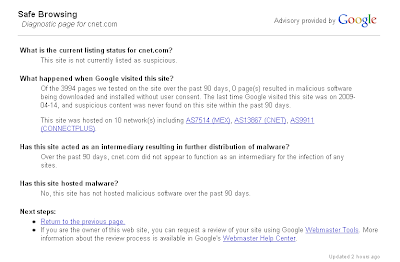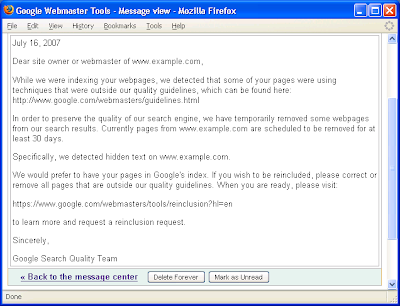Webmaster Level: All
In our ongoing effort to help you find more high-quality websites in
search results, today we’re launching an algorithmic change that looks
at the layout of a webpage and the amount of content you see on the page
once you click on a result.
As
we’ve mentioned previously,
we’ve heard complaints from users that if they click on a result and
it’s difficult to find the actual content, they aren’t happy with the
experience. Rather than scrolling down the page past a slew of ads,
users want to see content right away. So sites that don’t have much
content “above-the-fold” can be affected by this change. If you click on
a website and the part of the website you see first either doesn’t have
a lot of visible content above-the-fold or dedicates a large fraction
of the site’s initial screen real estate to ads, that’s not a very good
user experience. Such sites may not rank as highly going forward.
We understand that placing ads above-the-fold is quite common for many
websites; these ads often perform well and help publishers monetize
online content. This algorithmic change does not affect sites who place
ads above-the-fold to a normal degree, but affects sites that go much
further to load the top of the page with ads to an excessive degree or
that make it hard to find the actual original content on the page. This
new algorithmic improvement tends to impact sites where there is only a
small amount of visible content above-the-fold or relevant content is
persistently pushed down by large blocks of ads.
This algorithmic change noticeably affects less than 1% of searches
globally. That means that in less than one in 100 searches, a typical
user might notice a reordering of results on the search page. If you
believe that your website has been affected by the page layout algorithm
change, consider how your web pages use the area above-the-fold and
whether the content on the page is obscured or otherwise hard for users
to discern quickly. You can use our
Browser Size tool, among
many others, to see how your website would look under different screen resolutions.
If you decide to update your page layout, the page layout algorithm will
automatically reflect the changes as we re-crawl and process enough
pages from your site to assess the changes. How long that takes will
depend on several factors, including the number of pages on your site
and how efficiently Googlebot can crawl the content. On a typical
website, it can take several weeks for Googlebot to crawl and process
enough pages to reflect layout changes on the site.
Overall, our advice for publishers
continues to be to focus on delivering the best possible user experience
on your websites and not to focus on specific algorithm tweaks. This
change is just one of the over 500 improvements we expect to roll out to
search this year. As always, please post your feedback and questions in
our
Webmaster Help forum.
Posted by Matt Cutts, Distinguished Engineer
























